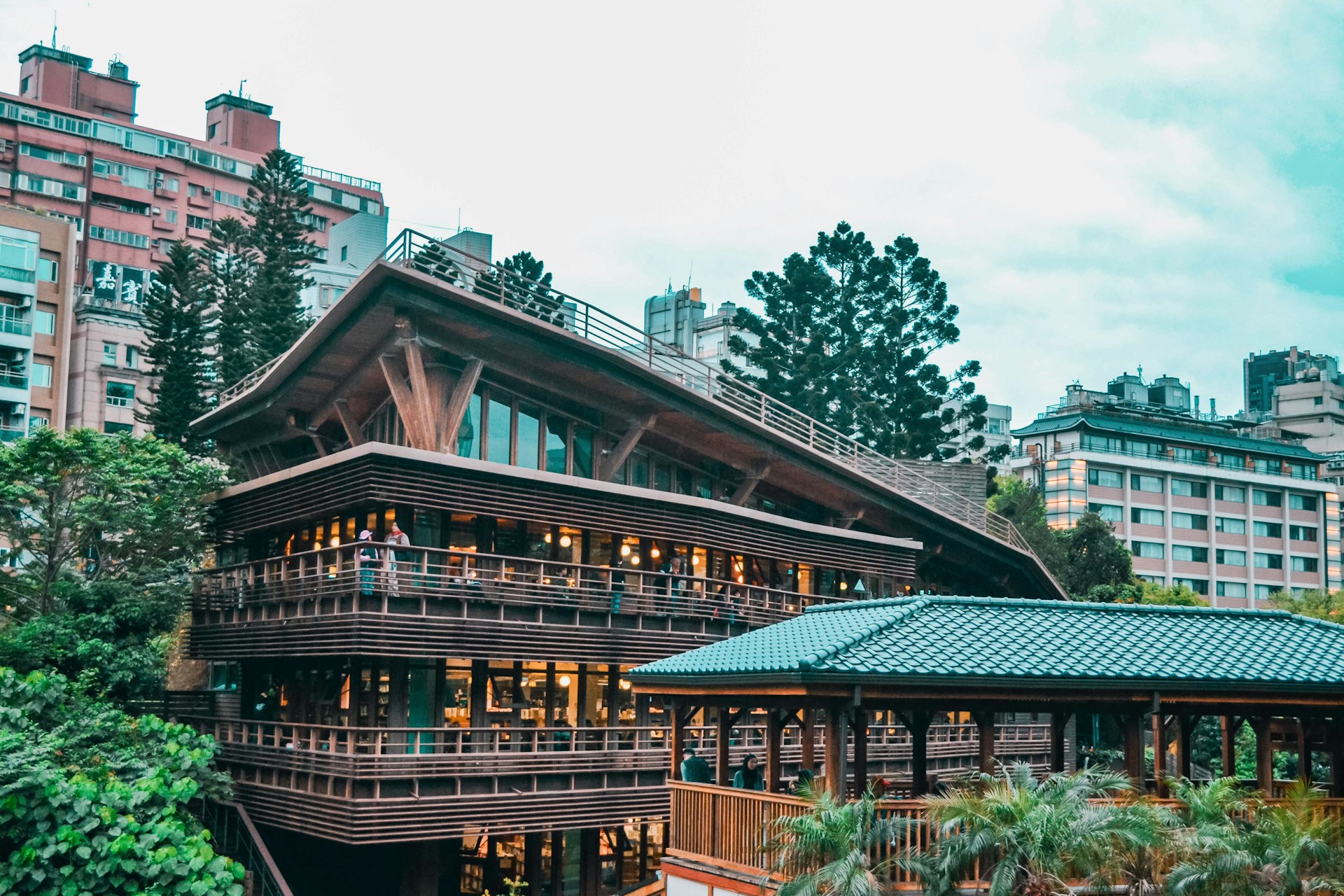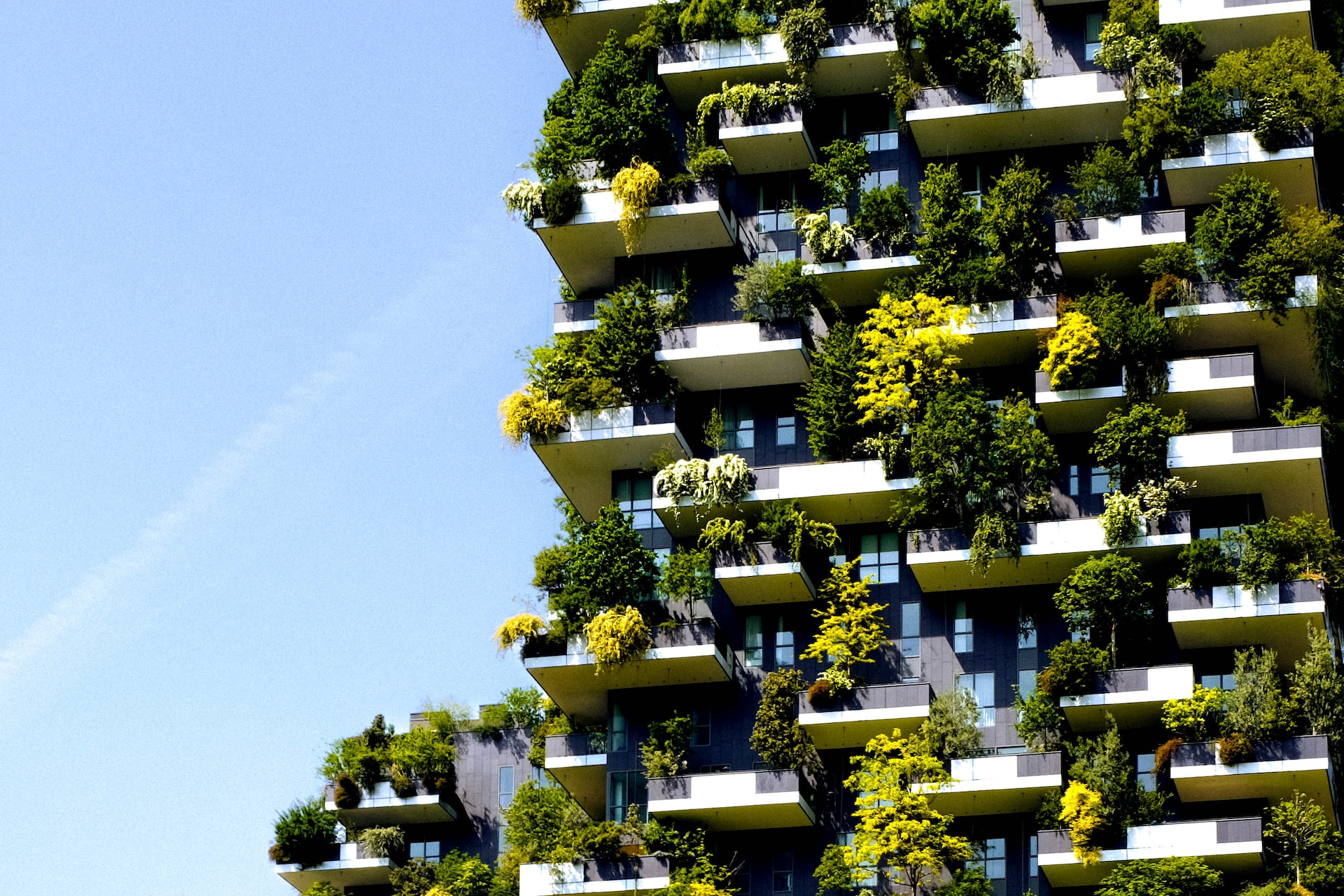
6 Sustainable Architecture Examples You Can Visit Today
We are reader-supported. When you buy through links on our site, we may earn affiliate commission.
You’ve probably heard of living buildings, blue infrastructure, and green roofs before, but have you ever seen these concepts in action? To satisfy your curiosity, we collected some of the best sustainable architecture examples from around the world.
1. ACROS Fukuoka in Fukuoka, Japan
The ACROS Fukuoka Prefectural International Hall is a 14-tier step garden in Fukuoka, Japan. As the center for international and cultural exchange in Tenjin Central Park, it provides over 58,125 square feet of public space. Apparently, the architect meant to return green space to the Fukuoka residents instead of removing it with a new structure.
In the city center, ACROS Fukuoka’s rooftop garden is the only green space open to the public. Naturally, it’s a sight to behold. Next to the steps leading to the top of the structure, large pools with water features drown out the city’s noise pollution. Also, greenery covers the entire step garden — more than 50,000 plants of 120 different species, to be exact.
The ACROS Fukuoka is one of the best sustainable architecture examples. It has living rooftops, rainfall collection systems, and public recreation spaces. Given that over 60% of people will live in cities by 2050, these things are crucial for quality of life. This building’s very existence boosts biodiversity, lowers the city’s temperature, and improves the air quality.
2. Beitou Green Library in Taipei, Taiwan
The Green Library in Beitou is among the most interesting sustainable architecture examples. It opened in the Betiou district in Taipei, Taiwan in 2006. It has massive windows to naturally circulate air, provide light and cool the building. Solar panels that power the lights and public computers cover the roof.

The Beitou Green Library also has a rainfall and stormwater collection system it uses to water plants and flush toilets. The unique angled roof was designed with the Taiwanese climate in mind, so all condensation and rain slides into collection units — and protects the building’s long-term structural integrity in the process.
This three-story building is partly underground to reduce cooling costs and energy use further. The above-ground section has balconies covered in greenery. Considering research proves exposure to plants can be mentally beneficial, it’s the perfect place to relax and read a book.
3. Bullitt Center in Seattle, Washington
In Seattle, Washington, the Bullitt Center is one of the most fascinating sustainable architecture examples in the United States. For starters, its iconic opening happened on Earth Day — you can’t beat that. Since it’s a commercial office space, businesses lease roughly 90% of the 52,000-square-foot building.
Experts believe it will last for at least two and a half centuries because it’s made of timber, steel and concrete. Admittedly, these are among the most unsustainable materials in construction. However, the building’s other qualities make up for this oversight.
The Bullitt Center has reached net-zero energy production and use. It leverages its solar panel array to generate 30% more electricity than it needs, leaving over 550,000 kWh leftover — this amount of energy could power dozens of Seattle homes annually.
Also, the Bullitt Center reached net zero water production and use. It uses stormwater and rainfall reservoirs to benefit from Washington state’s wet weather. Its 50,000-gallon cistern meets 100% of on-site demand — and always has extra to give back to the city.
Of course, it’s essential to mention the Bullitt Center is one of the best sustainable architecture examples because of biomimicry. For one, it has blinds that rise and lower with the sun. It also has built-in ventilation channels and windows that open at night. These features naturally regulate heat and circulate air, similar to how a cold-blooded animal functions.
4. One Angel Square in Manchester, England
The One Angel Square is one of the best sustainable architecture examples the United Kingdom has to offer. Located in Manchester, this office building is the first in the country to receive an outstanding rating from the Building Research Establishment Environmental Assessment Method. Less than 1% of commercial structures get this honor.
At over 14 stories, the One Angel Square is the tallest office building in Manchester. It’s made up of over 330,000 square feet of concrete and glass. Although those aren’t the most sustainable materials, the architect relies on them to enhance their passive design.
Compared to the owner’s previous headquarters, this building uses 50% less energy and outputs 80% fewer carbon emissions. In part, it’s because the south-facing windows heat the building naturally. Additionally, a series of underground concrete tubes pull fresh air from outside to rapidly cool everything at night. There are even built-in rainfall and stormwater collection systems.
5. Trudo Vertical Forest in Eindhoven, Netherlands
The Trudo Vertical Forest in Eindhoven mimics the luxury Bosco Verticale in Milan. It’s one of the most fascinating sustainable architecture examples because it’s public housing — and you don’t see many fancy buildings like this open to the average person.

This building is a 19-story public apartment complex with 125 individual apartments. Although you might assume the modern design and live vegetation would make this place expensive, the architect insisted on rent control — it only cost roughly $700 a month to live there in 2021.
Although initially there were just 125 saplings and 5,000 various shrubs and grasses, biodiversity and additional planting increased those figures dramatically. Now, there are over 800 trees and 20,000 plants. This greenery extends all the way up the sides of the building.
To mimic the Bosco Verticale, the Trudo Vertical Forest had to contain a lot of concrete. Not to mention, a high-rise skyscraper needs enhanced structural support for all of the vegetation’s extra weight. That being said, the architect admitted they’d do things more sustainably in hindsight.
6. Aristi Mountain Resort & Villas in Aristi, Greece
In Aristi, Greece, stands the Aristi Mountain Resort & Villas. It’s one of the best sustainable architecture examples because you could go there if you’d like. After all, it’s only $100 – $500 a night, depending on the date you go and the room type you get.
The Aristi Mountain Resort & Villas uses only ancient design practices. It has even funded nearby renovations — like stone bridges, Byzantine churches, and cobblestone paths — to preserve the region’s historic landscape.
What’s more, the Aristi Mountain Resort & Villas uses only local, natural building materials. On average, construction crews waste roughly 30% of the supplies they initially bring onto their site. In the case of this building, however, everything is sourced and used sustainably.
Every tourism experience the resort offers is sustainably centered. For instance, its high-end gastronomy restaurant only produces cuisine using fresh, natural ingredients. It sources free-range boar from nearby mountains, herbs from backyard gardens, and produce from local farmers.
The building itself has built-in water conservation measures, LED lighting, and a geothermal heat pump. The resort’s policies align with the rest of the sustainability measures. For example, staff has worked hard to eliminate single-use plastics entirely — a big step, considering this is the hospitality industry. If you need more proof of its impressive impact, know it won the World’s Leading Eco-Lodge Award in 2021 and 2022.
Sustainable Architecture Examples Help the Planet
These sustainable architecture examples prove concepts like living buildings, blue infrastructure, and green roofs are beneficial, practical, and good investments. At the very least, knowing about them is good because you can add them to your “places to visit” list.
Share on
Like what you read? Join other Environment.co readers!
Get the latest updates on our planet by subscribing to the Environment.co newsletter!
About the author
Maria Visser
Maria serves as the Assistant Editor of Environment.co. A true foodie and activist at heart, she loves covering topics ranging from veganism to off grid living.





